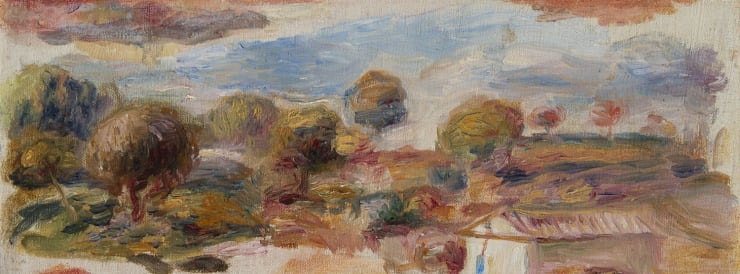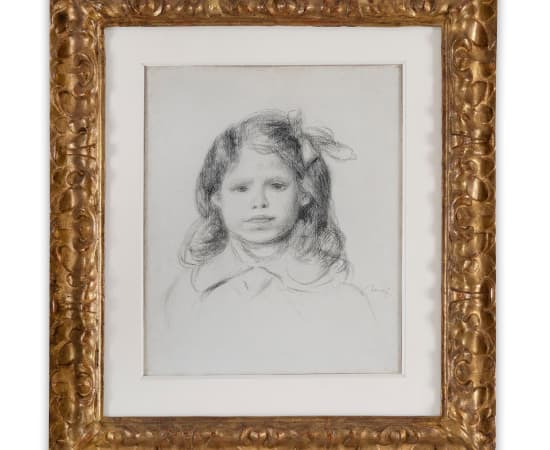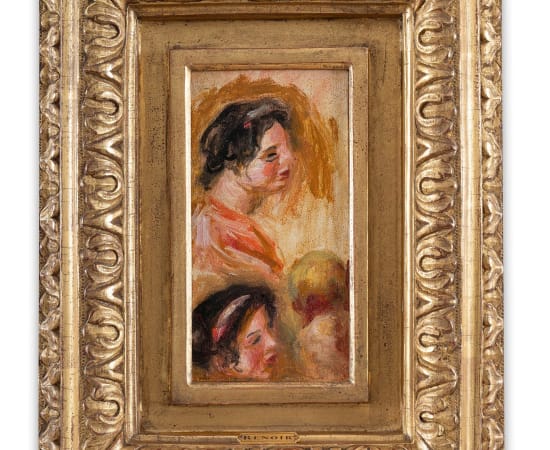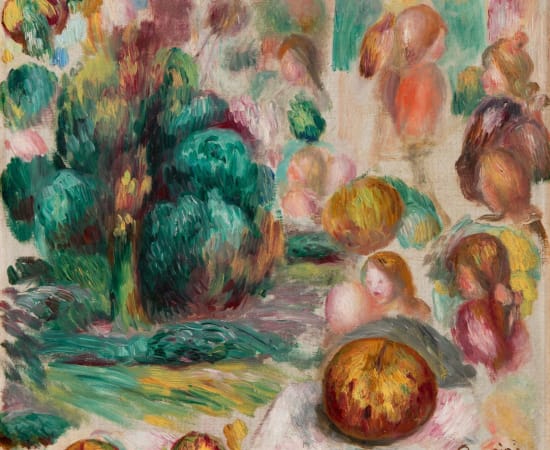Pierre-Auguste Renoir (1841-1919) French
Works
Biography
Pierre-Auguste Renoir (1841–1919) was a French painter renowned for his significant contributions to the Impressionist movement. Born on February 25, 1841, in Limoges, France, Renoir moved to Paris with his family in 1845. At the age of 13, he began an apprenticeship as a porcelain painter, demonstrating an early affinity for art. In 1862, he enrolled at the École des Beaux-Arts in Paris, where he studied under Charles Gleyre and formed lasting friendships with fellow artists Claude Monet and Alfred Sisley.
Renoir's early works were influenced by the realism of Gustave Courbet and the vibrant color palettes of Eugène Delacroix. By the early 1870s, he, along with Monet, Sisley, and others, developed the Impressionist style, characterized by loose brushwork and a focus on capturing light and its changing qualities. Despite initial resistance from traditional art institutions, Renoir and his contemporaries held independent exhibitions, gradually gaining recognition for their innovative approaches.
Throughout his career, Renoir's art evolved, reflecting his travels and personal experiences. In the early 1880s, after a trip to Italy, he began emphasizing more defined contours and classical forms, a period often referred to as his "Ingres period." He passed away on December 3, 1919, in Cagnes-sur-Mer, France.
Bailly Gallery honors Renoir's enduring legacy by featuring works that exemplify his artistic journey. One notable piece in their collection is "Paysage du midi, fragment," circa 1905, which captures the essence of Renoir's mature style, blending vibrant color harmonies with a serene depiction of the southern French landscape. This painting reflects Renoir's ability to convey the warmth and luminosity of his surroundings, a testament to his mastery of light and atmosphere.
baillygallery.com
Through such curated selections, Bailly Gallery provides art enthusiasts with the opportunity to engage with Renoir's work, offering insights into the evolution of his technique and the themes that permeated his art.
Renoir's early works were influenced by the realism of Gustave Courbet and the vibrant color palettes of Eugène Delacroix. By the early 1870s, he, along with Monet, Sisley, and others, developed the Impressionist style, characterized by loose brushwork and a focus on capturing light and its changing qualities. Despite initial resistance from traditional art institutions, Renoir and his contemporaries held independent exhibitions, gradually gaining recognition for their innovative approaches.
Throughout his career, Renoir's art evolved, reflecting his travels and personal experiences. In the early 1880s, after a trip to Italy, he began emphasizing more defined contours and classical forms, a period often referred to as his "Ingres period." He passed away on December 3, 1919, in Cagnes-sur-Mer, France.
Bailly Gallery honors Renoir's enduring legacy by featuring works that exemplify his artistic journey. One notable piece in their collection is "Paysage du midi, fragment," circa 1905, which captures the essence of Renoir's mature style, blending vibrant color harmonies with a serene depiction of the southern French landscape. This painting reflects Renoir's ability to convey the warmth and luminosity of his surroundings, a testament to his mastery of light and atmosphere.
baillygallery.com
Through such curated selections, Bailly Gallery provides art enthusiasts with the opportunity to engage with Renoir's work, offering insights into the evolution of his technique and the themes that permeated his art.
Enquire







